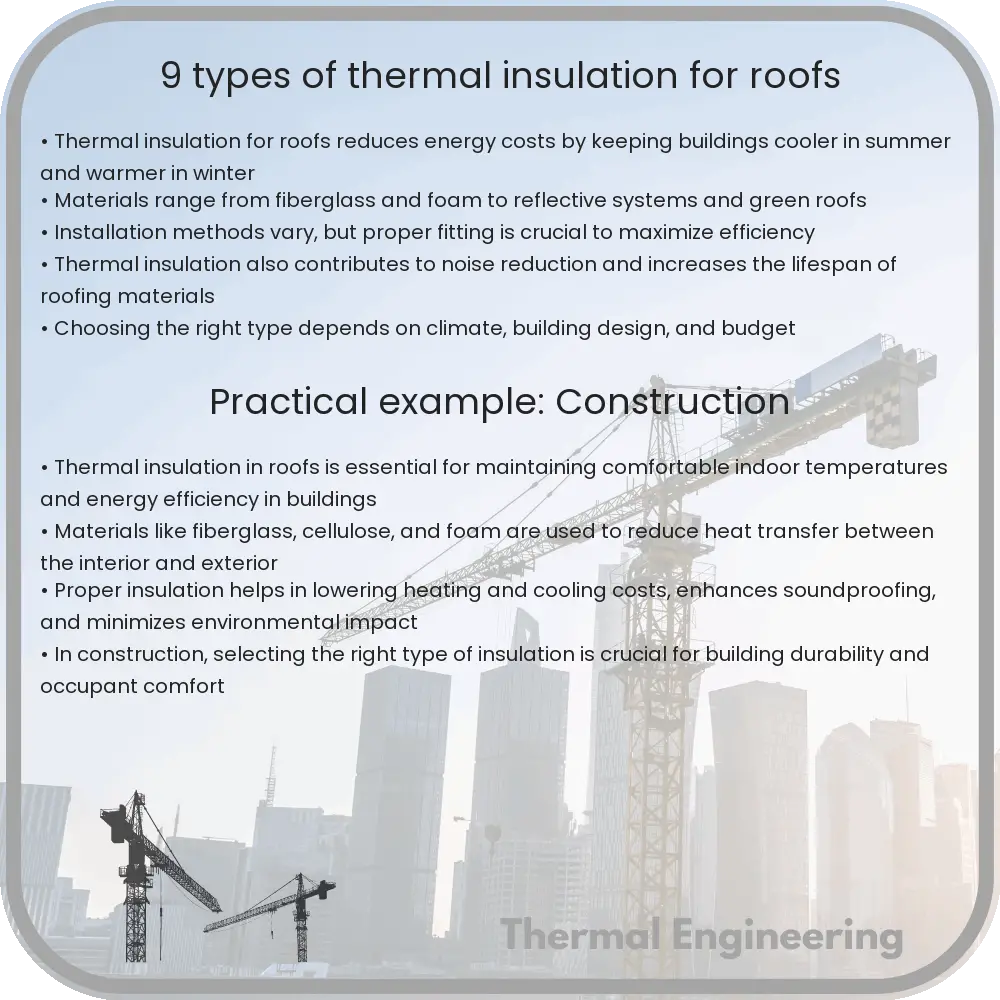Learn about the nine common types of thermal insulation for roofs, their properties, and applications for energy efficiency.

Understanding Thermal Insulation for Roofs
Thermal insulation is a critical component in building design, contributing to the overall energy efficiency and comfort of buildings. Proper insulation reduces the heat transfer between the outside environment and the interior spaces, helping maintain a stable indoor temperature and reducing energy costs. Here we explore nine common types of thermal insulation materials used in roofing applications, each with its unique properties and applications.
Types of Roof Insulation Materials
- Fiberglass Insulation: Made from fine glass fibers, fiberglass is one of the most common forms of insulation in residential and commercial buildings. It’s available in batts or rolls and is effective due to its low heat transfer characteristics.
- Rigid Foam Insulation: This type of insulation comes in large panels of varying thicknesses and can be cut to fit any space. Polystyrene, polyisocyanurate (polyiso), and polyurethane are common types of rigid foam, each with different thermal resistance properties.
- Spray Foam Insulation: Applied using a spray device, spray foam expands upon application, filling in gaps and offering high R-values (a measure of thermal resistance). It is available in open-cell and closed-cell forms, each providing different moisture and air infiltration characteristics.
- Reflective Insulation: Also known as radiant barriers, reflective insulation uses materials like aluminum foil to reflect radiant heat away from the building, reducing cooling costs particularly in hot climates.
- Mineral Wool: Also referred to as rock wool or slag wool, mineral wool is made from molten glass, stone, or industrial waste. It is highly fire resistant and effective at soundproofing in addition to its insulation properties.
- Cellulose: Comprising of recycled paper products, primarily newspaper, and treated with fire retardant, cellulose is an eco-friendly option. It is usually blown into place and can adapt to odd-shaped enclosures and obstacles.
- Wood Fiber: Produced from wood product waste, wood fiber panels are treated with natural binders and fillers. Besides providing thermal insulation, they also offer sound insulation properties and are breathable, helping control humidity.
- Foam Glass: Composed of crushed glass that is heated until it puffs and binds together, foam glass is lightweight, highly durable, and resistant to water and fire. It is particularly useful in flat roof and floor insulation.
- Aerogel: Known for its exceptional thermal resistance, aerogel is a synthetic porous ultralight material derived from a gel, in which the liquid component of the gel has been replaced with a gas. It is often used in specialized environments, such as industrial applications or in aerospace, due to its high cost.
Choosing the Right Insulation Type
Selecting the appropriate insulation material for a roof depends on various factors including climate, budget, roof design, and specific building codes. Higher R-value materials tend to offer better thermal resistance but may come at a higher cost or with other considerations such as weight or installation requirements. Assessing the long-term energy savings is also crucial in making the most cost-effective decision for roof insulation.
In conclusion, the wide range of insulation types available allows for flexibility in meeting the insulation needs of different roofing systems under varying environmental and budgetary conditions. Consulting with an insulation professional can provide further guidance tailored to specific project needs, ensuring optimal energy efficiency and comfort.